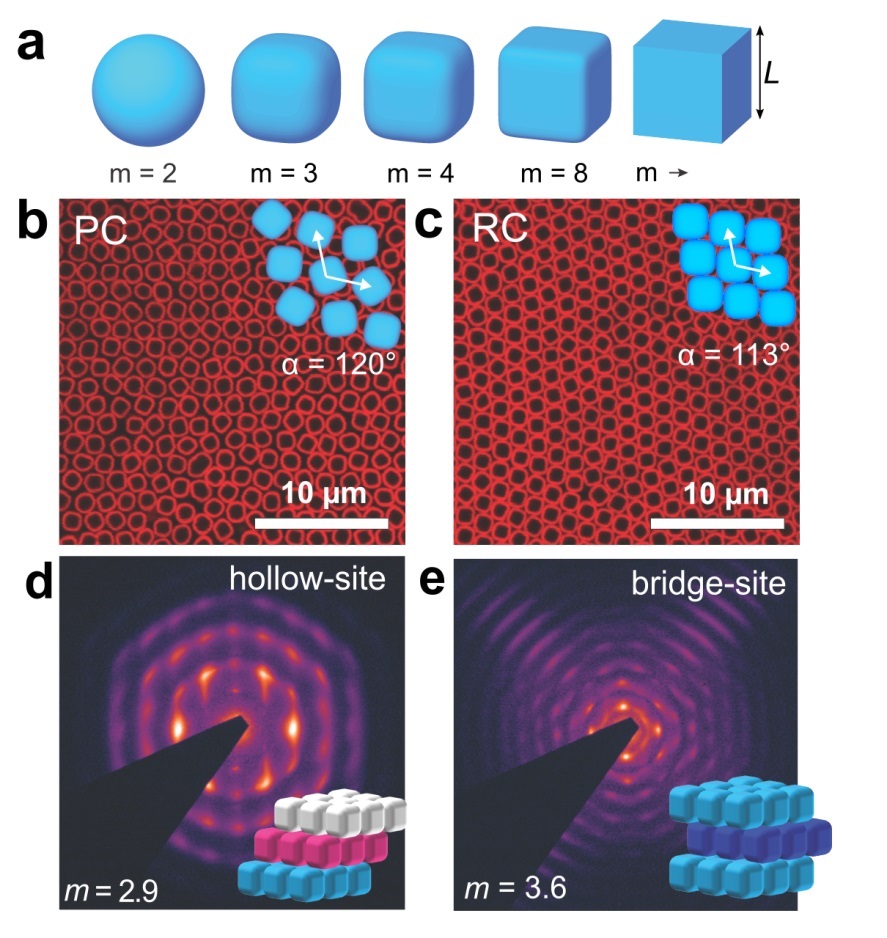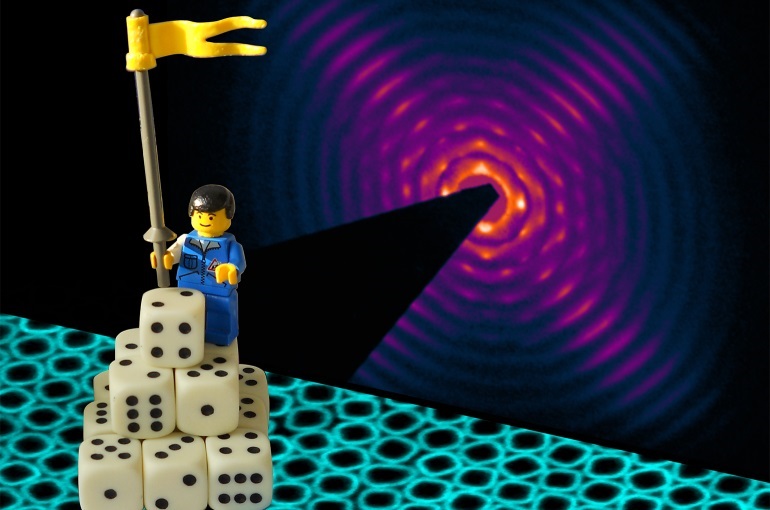10 February 2017
Colloids – particles with a diameter of only one thousandth of a millimetre – can spontaneously organise into ordered structures with fascinating optical properties. They may, for example, manipulate light to show structural colours or prevent certain colours to pass. For cubic shaped colloids, the self-assembly has previously been predicted theoretically, but researchers from Utrecht University have now studied it in an experimental environment. More surprisingly, the experiments show some unpredicted results. The researchers are publishing their findings today in Nature Communications.
In the lab, the researchers produced different colloidal ‘superballs’: shapes that fall between cubes with sharp corners and perfect spheres. They studied the crystal structures of these colloidal superballs with optical microscopy combined with ultra-small angle x-ray scattering data.
Cubic ordering
First they confirmed the prediction that at high particle concentrations the structures transition from a plastic crystal – in this structure the particle rotates – into a rhombic crystal – in which the extent of cubic ordering depends on the particle shape (the roundness of the superball corners). When looking in more detail at the stacking of the rhombic crystal, they found that when the particles become more cubic, the position of the rhombic layers on the layer below shifts. The particle is positioned either in the hollow site formed by three particles – hollow site – or on the bridge between two particles where two particle corners meet – bridge site. In addition, they observed that when the particle interactions were slightly changed a transition between the structures can occur. The bridge site structure and transition behaviour were not predicted before and shows that experimentally the phase behaviour is richer.
These findings bring the researchers one step closer to ultimately controlling the experimental self-assembly of superballs into functional materials, such as photonic crystals.

(a) Schematic representation of the family of superballs used in the experiment.
(b) Microscope image of a plastic crystal phase with randomly oriented particles on a hexagonal lattice.
(c) Microscope image of a rhombic crystal phase with positional and orientational order.
(d) Small angle x-ray scattering pattern of the hollow site structure.
(e) Small angle x-ray scattering pattern of the bridge site structure.
Dutch-Belgian beamline
The ultra-small angle x-ray scattering data used in this study was obtained at the Dutch-Belgian Beamline (DUBBLE) in Grenoble. Utrecht University played a key role in establishing the DUBBLE project and in providing excellent use of the beamline. Since 2000, the beamline has provided data for over 1200 scientific publications including 180 PhD theses, about 15% of which are defended at Utrecht University.
Publication
Observation of solid-solid transitions in 3D crystals of colloidal superballs
Janne-Mieke Meijer, Antara Pal, Samia Ouhajji, Henk N.W. Lekkerkerker, Albert P. Philipse, and Andrei V. Petukhov
Nature Communications, 8, 14352 (2017). DOI 10.1038/NCOMMS14352















